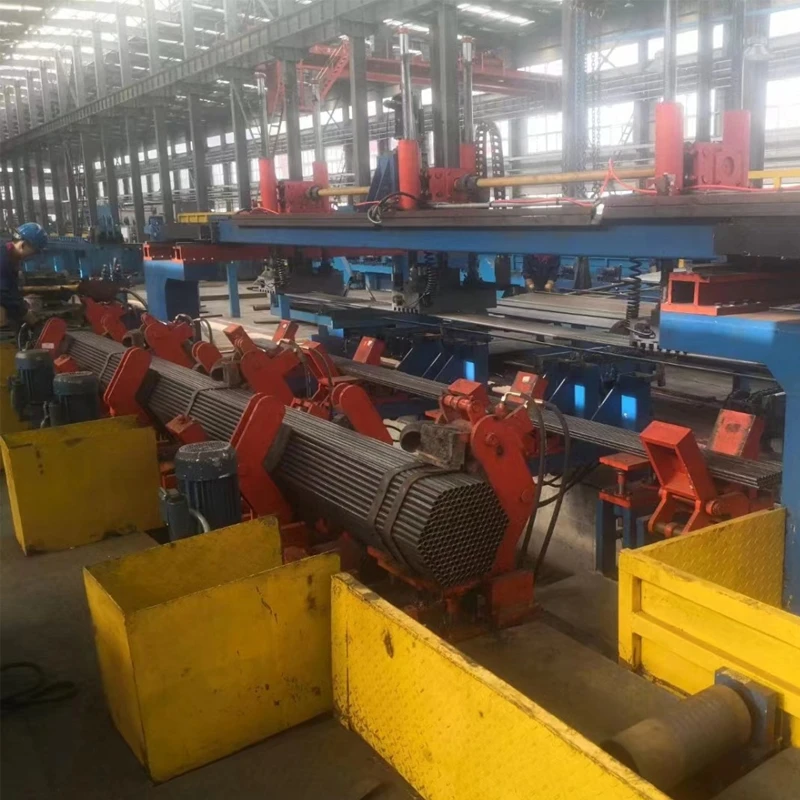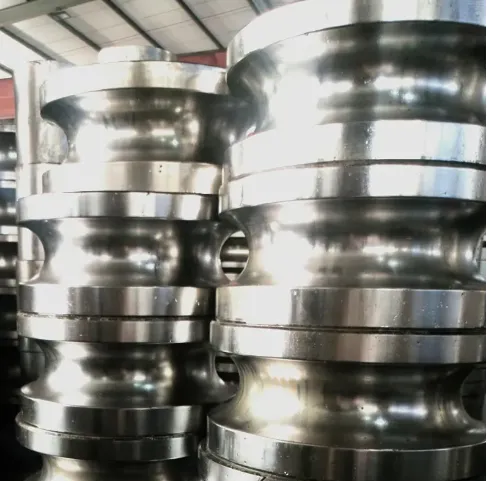Feb . 16, 2025 03:02
Back to list
Roll Mold
In the constantly evolving landscape of industrial manufacturing, roller door roll forming machines have emerged as a game-changer. These machines are the unsung heroes behind the sleek and efficient roller doors that secure homes, warehouses, and commercial buildings across the globe. Despite their widespread use, few fully understand the intricacies and superiority of these machines, underscoring the need for an authoritative exploration into their design, functionality, and benefits.
Trustworthiness in the operation of roller door roll forming machines is paramount, as the structural integrity of roller doors directly impacts safety and security. Quality assurance practices are integrated throughout the manufacturing process, from the selection of raw materials to the final inspection of finished products. Reputable manufacturers adhere to stringent quality control measures and international standards, ensuring the reliability of both the machine and the product it creates. Regular maintenance and operator training further contribute to the dependability of these machines, fostering confidence in their long-term performance. Real-world experience with roller door roll forming machines highlights their transformative impact on the manufacturing sector. Companies utilizing these machines benefit from streamlined operations, reduced labor costs, and increased production capacity. The ability to produce door sections on-demand allows manufacturers to respond swiftly to market demands and client specifications, creating opportunities for competitive advantage. Operators of these machines frequently report enhanced workplace safety, attributed to the automation and ergonomic design features that reduce manual intervention. In conclusion, roller door roll forming machines represent a pinnacle of industrial manufacturing technology, combining mechanical precision, engineering expertise, and reliable operation. For businesses in the construction and manufacturing sectors, investing in these machines translates to higher productivity, cost efficiency, and product excellence. As innovations continue to emerge, the future of roll forming technology promises even greater advancements, cementing its role as an essential component of modern industrial practices. By embracing this technology, manufacturers not only improve their operational capabilities but also reaffirm their commitment to quality and innovation in the products they deliver.


Trustworthiness in the operation of roller door roll forming machines is paramount, as the structural integrity of roller doors directly impacts safety and security. Quality assurance practices are integrated throughout the manufacturing process, from the selection of raw materials to the final inspection of finished products. Reputable manufacturers adhere to stringent quality control measures and international standards, ensuring the reliability of both the machine and the product it creates. Regular maintenance and operator training further contribute to the dependability of these machines, fostering confidence in their long-term performance. Real-world experience with roller door roll forming machines highlights their transformative impact on the manufacturing sector. Companies utilizing these machines benefit from streamlined operations, reduced labor costs, and increased production capacity. The ability to produce door sections on-demand allows manufacturers to respond swiftly to market demands and client specifications, creating opportunities for competitive advantage. Operators of these machines frequently report enhanced workplace safety, attributed to the automation and ergonomic design features that reduce manual intervention. In conclusion, roller door roll forming machines represent a pinnacle of industrial manufacturing technology, combining mechanical precision, engineering expertise, and reliable operation. For businesses in the construction and manufacturing sectors, investing in these machines translates to higher productivity, cost efficiency, and product excellence. As innovations continue to emerge, the future of roll forming technology promises even greater advancements, cementing its role as an essential component of modern industrial practices. By embracing this technology, manufacturers not only improve their operational capabilities but also reaffirm their commitment to quality and innovation in the products they deliver.
Prev:
Next:
Latest news
-
High Frequency Straight Seam Welded Pipe Production Line|BzZhou Xinghua|Precision Welding&EfficiencyNewsJul.30,2025
-
High Frequency Straight Seam Welded Pipe Production Line - BzZhou Xinghua|Precision Engineering&EfficiencyNewsJul.30,2025
-
High-Frequency Straight Seam Welded Pipe Production Line-BzZhou Xinghua Machinery Equipment Manufacturing Co., LTD.NewsJul.30,2025
-
High-Frequency Straight Seam Welded Pipe Production Line-BzZhou Xinghua Machinery Equipment Manufacturing Co., LTD.|Precision Manufacturing, High EfficiencyNewsJul.30,2025
-
High Frequency Straight Seam Welded Pipe Production Line-BzZhou Xinghua Machinery Equipment Manufacturing Co., LTD.|Precision Steel Pipe Manufacturing&Industrial EfficiencyNewsJul.29,2025
-
High-Frequency Straight Seam Welded Pipe Production Line-BzZhou Xinghua Machinery Equipment Manufacturing Co., LTD.|Precision Steel Pipe Manufacturing&Industrial EfficiencyNewsJul.29,2025


